Hiking offers relaxation, exercise, and a connection with nature. It allows you to enjoy sweeping views of the landscape and discover plants and wildlife up close. But how do we protect nature from ourselves? Litter and careless behavior by hikers are causing problems in many regions now. This guide answers the question, “How can I hike sustainably?” with clear, easy-to-follow tips for leaving no unnecessary traces behind.
7 environmental sins to avoid while hiking
Before we discuss how you can best enjoy your hikes, including recommendations on footwear and other essentials, we would like to point out the most common environmental sins.
#1 Ignoring prohibited areas
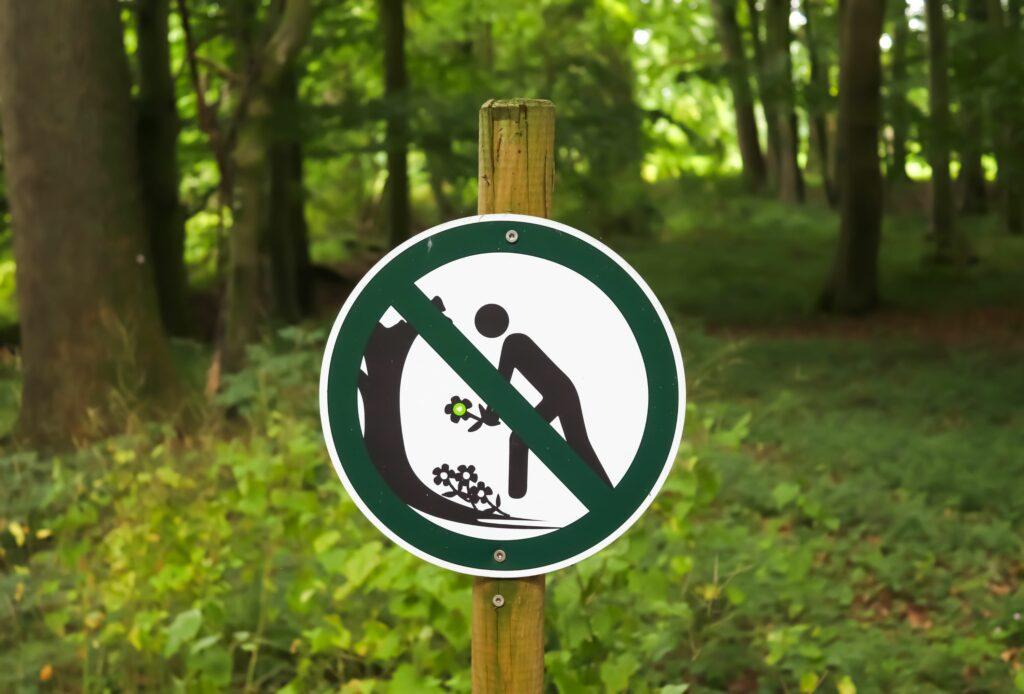
Blocked paths, nature reserves, and “no trespassing” signs aren’t there for fun; they’re there for your safety and the protection of ecosystems. In the Alps, for instance, mass tourism is causing an increasing number of problems, including the destruction of flora and fauna, as well as rescue operations resulting from carelessness and the use of closed sections. Therefore, always stay on designated routes and respect signage.
#2 Wild camping
Spending the night under the stars sounds romantic—but so does staying at an official campsite, designated bivouac, or trekking site. These places also have important amenities, such as toilets and trash cans.
#3 Leaving trash and cigarette butts behind
Even seemingly small items, such as candy wrappers, tissues, and chewing gum, take decades to decompose. If they decompose at all! So, take your trash with your—even organic waste, such as fruit peels, does not belong in nature.
#4 Leaving dog waste behind
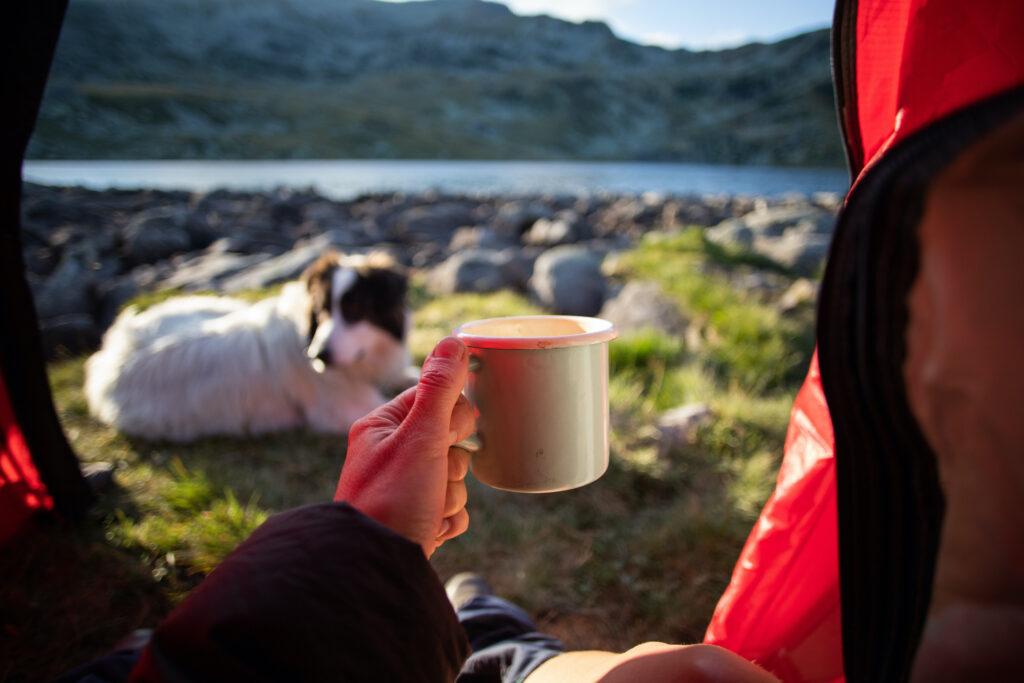
For many people, dogs are an integral part of the hiking experience. However, their waste contains nutrients and germs that can alter alpine flora. Always carry bags with you and dispose of them properly. This applies to both your dog’s waste and your own!
#5 Swimming in protected mountain lakes
Some bodies of water, such as Lake Antermoia in the Dolomites and Lake Bodensee in Styria, Austria, are closed to the public to protect their ecosystems. Swimming can disturb animals, destroy shore plants, and deteriorate water quality, so it’s important to stick to the rules, even when the water looks tempting (find more info here).
#6 Picking (protected) wildflowers
According to § 39 of the Federal Nature Conservation Act (BNatSchG), the so-called “hand bouquet rule” applies. This means that you may pick a small amount of wild herbs, mushrooms, berries, or flowers for personal use (but you should only do so if you have a use for them).
However, many people don’t realize that many wildflowers are endangered. In Germany, for instance, nearly one-third (26%) of all wildflowers are protected. This includes popular flowers like pussy willows, monkshood, gentian, and crocuses. Tip: Use Google Lens or various apps to identify plants on the go and ensure that you don’t pick any protected species.
#7 Disturbing animals
Animals need peace and quiet. Noise and cameras can be sources of stress. The Nature Conservation Union says: “Keep a respectful distance from animals and breeding grounds. Stay on paths and refrain from using flash photography or approaching animals.” Following these guidelines will prevent behavioral disturbances and ensure that you remain a respectful guest in their habitat.
Tips for sustainable hiking
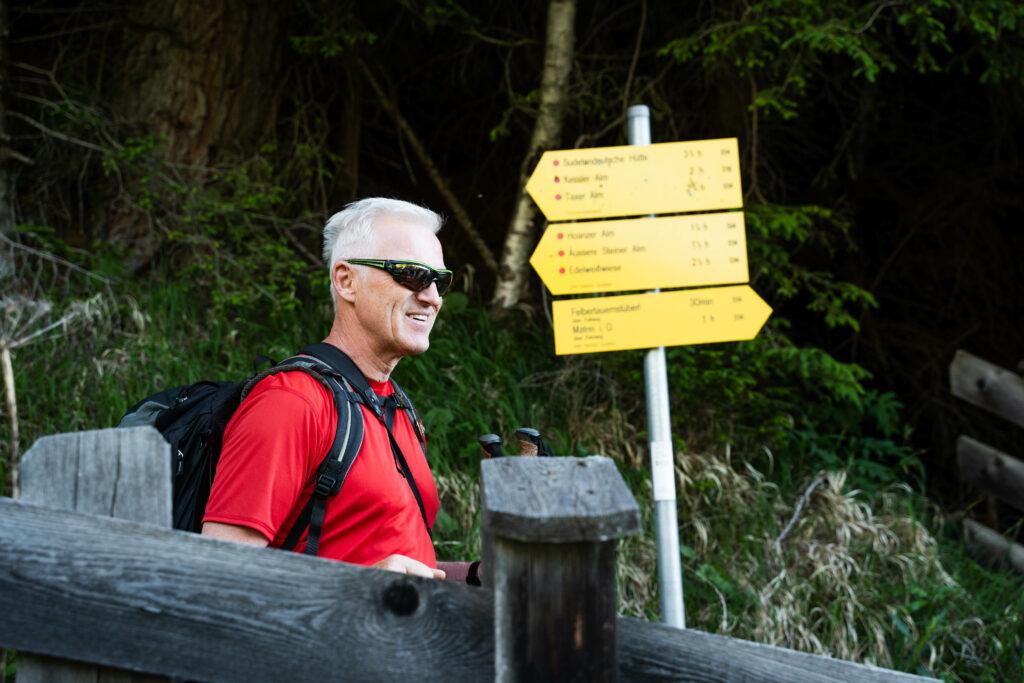
Now that you know what not to do, you might be wondering: What is the right thing to do? That’s what we’re going to talk about now! 🙂
Preparing for your hike
It’s worth investing a little time in planning before you lace up your hiking boots.
- Choose a route that matches your fitness level to prevent overexertion or having to turn back.
- Find out in advance about nature reserves, closed trails, and special local rules so you won’t encounter any surprises along the way.
- Research the animals and plants you might encounter, and find out if any of them are endangered or dangerous.
- Pack only the essentials to reduce weight.
- Use reusable containers for your provisions.
- Pack weather-appropriate clothing, preferably in layers for different conditions. Remember that the weather can change quickly, especially in the mountains. It gets much cooler at higher altitudes than in the valley!
- Book sustainable accommodations—we’ll recommend some options further down!
The right outfit for the mountains
Of course, we understand that you want to look good while hiking. You can do that with sustainable hiking clothing. Many eco-friendly labels produce functional clothing made from recycled plastic bottles or organic natural fibers that are environmentally friendly yet stylish. The product range extends from shoes to hats. If you want to take it a step further, look for the Fair Wear Foundation label, which guarantees fair working conditions.
Some sustainable clothing brands include Patagonia, Vaude, Icebreaker, Engel Natur, and Löffler. For shoes, consider Hanwag, Ethical Wares, Lowa, Eco Vegan Shoes, Will’s Vegan Store, and Doghammer. (The brands are mentioned for informational purposes only. We do not receive money or other benefits for mentioning them.) If you can recommend any other sustainable outdoor brands, please share them in the comments!)

5 sustainable hiking hotels and vacation homes in the DACH region
#1 Naturhotel Outside, East Tyrol – Hike with guides through the national park

The Naturhotel Outside in East Tyrol will pick you up at the Lienz train station and take you back on your departure day. Located in the heart of the Hohe Tauern National Park, this official hiking hotel is the perfect home base for hikes of all difficulty levels.
For example, you can discuss which route suits you best with hiking concierge Karin Steiner. We interviewed her for this article, and she shared some insider tips for hiking in the national park.
“We offer free hikes with our hiking guides several times a week. In addition, there are ranger tours in the Hohe Tauern National Park (also free for our guests). Backpacks and hiking poles are available to borrow free of charge at the hotel.“ – Naturhotel Outside
#2 Hotel Das Rübezahl, Bavaria – Discover the Allgäu with hiking concierge ”Bergbaschdi”
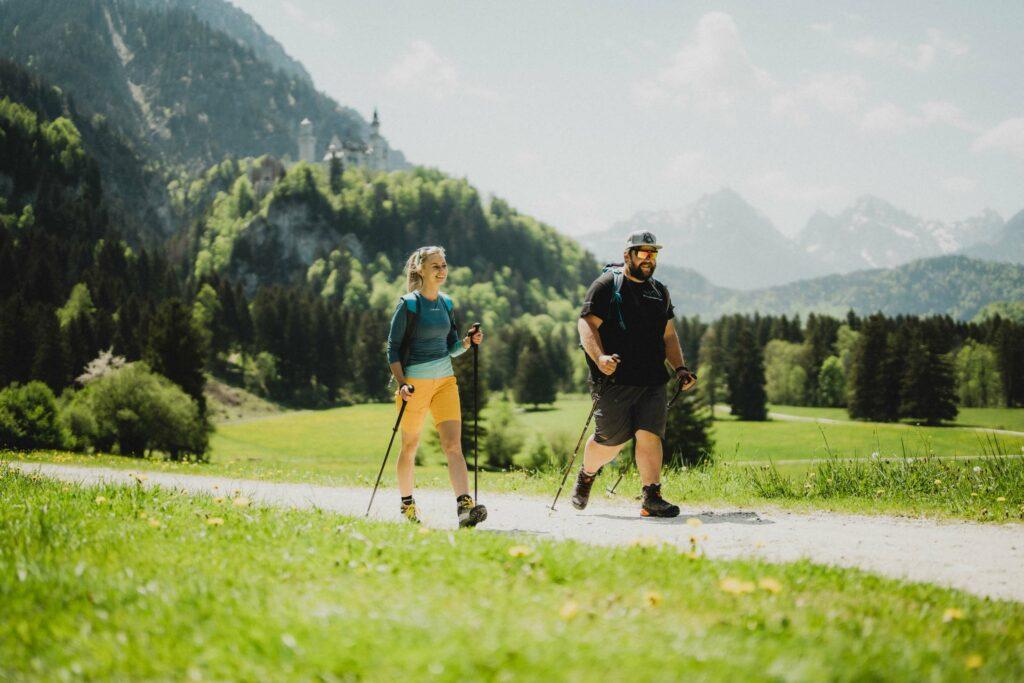
At the Hotel Das Rübezahl in Füssen, the hiking concierge, Bergbaschdi, is ready to show you the mountains in a unique way. In our interview, he reveals how he encourages even the most seasoned hikers to take breaks along the way.
In addition to guided tours, the hotel has a spacious spa area that’s perfect for unwinding after a hike.
- Tip: If you want to experience the mountain feeling even more intensely, you can extend your stay with an overnight stay in the hotel’s own Edelsberghütte
Füssen train station is 3 kilometers (5 minutes by car) from the hotel and there is a free shuttle service.
#3 LA VIMEA, South Tyrol – vegan hiking hotel
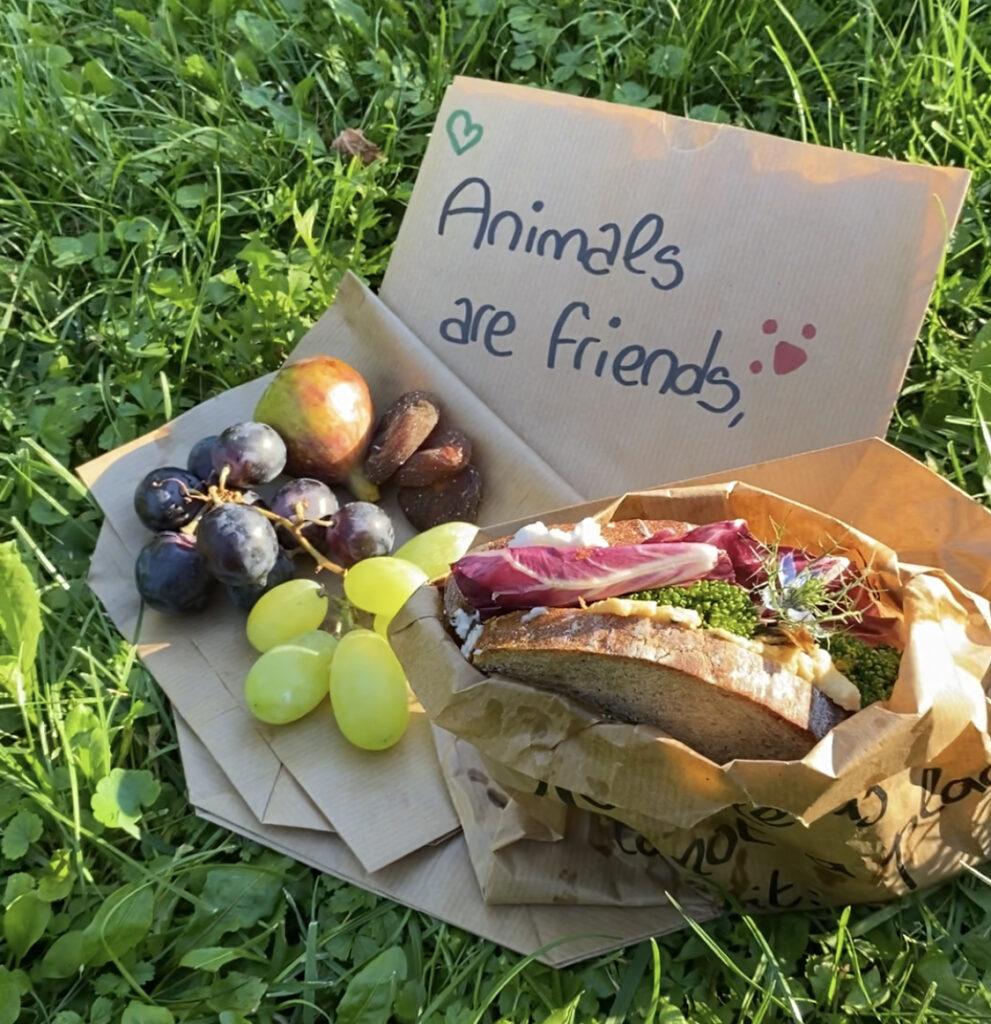
The LA VIMEA in Naturns makes climate-friendly travel easy; the hotel offers a shuttle service from the train station in Naturns. Another eco-friendly option is taking a long-distance bus, such as FlixBus, to Merano and then taking the train for the last leg of the journey.
As Italy’s first 100% vegan hotel, La Vimea is committed to sustainable cuisine. Hiking enthusiasts not only benefit from the animal-friendly packed lunches but also from the hotel’s ideal location in the heart of the South Tyrolean mountains, within walking distance of the Texel Group Nature Park. Numerous tours await you. After an active day, unwind in the saltwater pool, natural swimming pond, or sauna.
-
- Tip: Here you will find the hiking routes recommended by the hotel
#4Lifestyle Resort Zum Kurfürsten, Moselle — Combine hiking with Far Eastern wellness
If you want to combine hiking with wellness and culture, the Lifestyle Resort Zum Kurfürsten on the Moselle is the perfect choice. This region offers gentle, circular trails through vineyard-covered hillsides and picturesque riverside paths, as well as challenging trails with narrow paths, climbing passages, and ladders. There are also various excursion destinations around Bernkastel-Kues. Designed according to Feng Shui principles, the resort features a TCM center and five-element cuisine.
- Tip: Here you will find 10 hiking trails on komoot near the hotel.

#5 Summit Lodges Pfunds, Tyrol – log cabin in the heart of the mountains
If you prefer having your own space instead of staying in a hotel, the sustainably operated Summit Lodges Pfunds are perfect for you. The two log cabins can each accommodate up to six people, and they are ideally located for exploring the surrounding Tyrolean mountains. I asked owner Marco Spiess what else he would recommend besides hiking. His answer? Instead of long hikes, he recommends short trips. For example, it takes just 1.5 hours to reach the Pfundser Tschey, and then you can continue on to the Frudiger (Pfunds’ local mountain).
Otherwise, he recommends relaxing in the lodges. You can sit comfortably in the living room and enjoy the mountain view in front of the open fire.
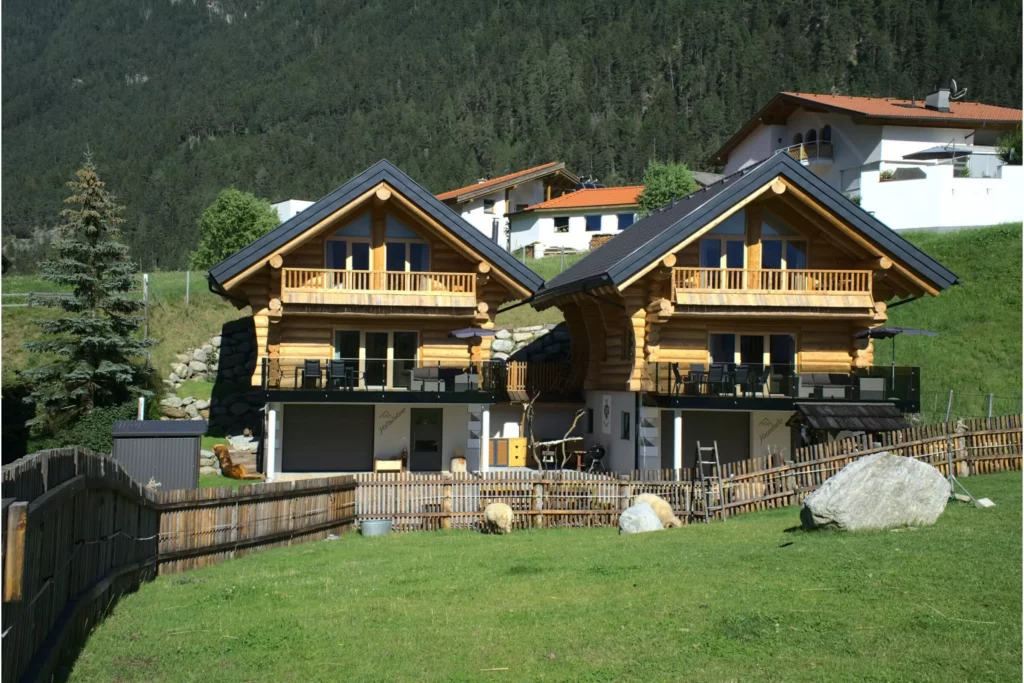
Sustainable Hiking Hotels in Tenerife and Peru
Of course, there are also wonderful hiking destinations outside of Europe. Depending on where you start your journey, it may not be quite as sustainable to get there, but there are Green Pearls® accommodations that consistently operate in an environmentally friendly manner.
#1 OCEANO Health Spa Hotel in Tenerife — Holistic Hiking on the Volcanic Island
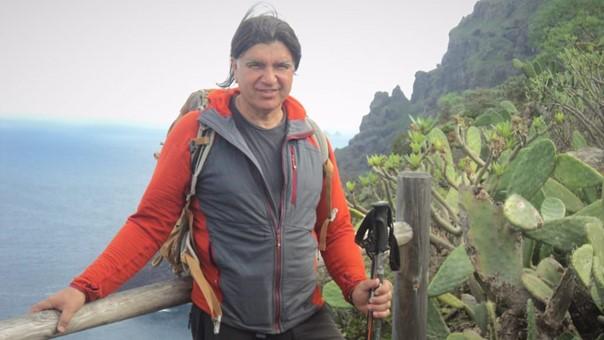
#2 Inkaterra Hotels in Peru — your dream destination on the Trail of the Incas
The legendary Inca Trail in Peru is on many hikers’ bucket lists. Spanning several stages, it winds through the Andes, passing by ruins and cloud forests and crossing high mountain passes en route to the UNESCO World Heritage Site of Machu Picchu. At the end of the trail, the Inkaterra Machu Picchu Pueblo Hotel awaits, offering the perfect opportunity to reflect on your hike while surrounded by lush tropical gardens.
We also recommend the Inkaterra Hacienda Urubamba. It is located in the Urubamba Valley near Cusco. There, your guide, Hiroshi Sánchez, will accompany you on hikes where you will discover nature and learn about the region’s traditional agriculture. Birdwatchers will particularly enjoy themselves — Hiroshi will be happy to show you colorful hummingbirds and rare Andean birds!
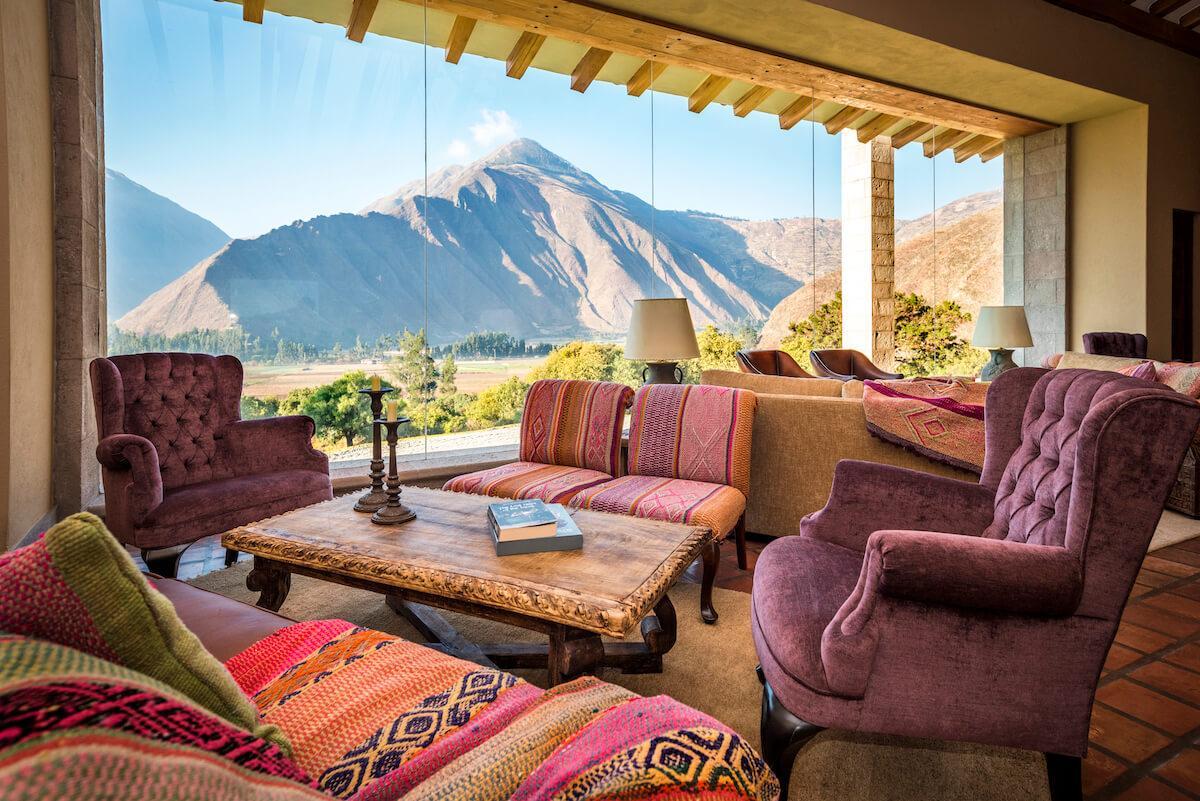
Here’s a tip for anyone who wants to hike more sustainably: try plogging
WAnother brilliant tip that we learned from the Swedes is to always pack a trash bag. You can use it to dispose of your trash and to collect anything that others have left behind in the forest or mountains, just like plogging (a portmanteau of the Swedish words “plocka” for picking up and “jogga” for jogging).

Hike with respect for yourself and nature
You are now well-equipped for your sustainable tour – from start to finish:
- You know what to avoid: No environmental sins, no traces, and no stress for nature or animals.
- You are prepared: You have the right equipment and have chosen the right tour — because less is often more.
- You travel consciously: Whether by train, shuttle, or bus, you keep your carbon footprint small.
- You are well accommodated: In accommodations designed not only for hikers but also to promote the experience of nature – from alpine national parks to tropical gardens.
This makes hiking a valuable experience for your body, mind, and the environment. Together, we can ensure that we enjoy and preserve the landscape, step by step.
This is an update from April 12, 2019
Save this article to Pinterest.

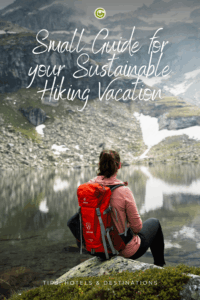
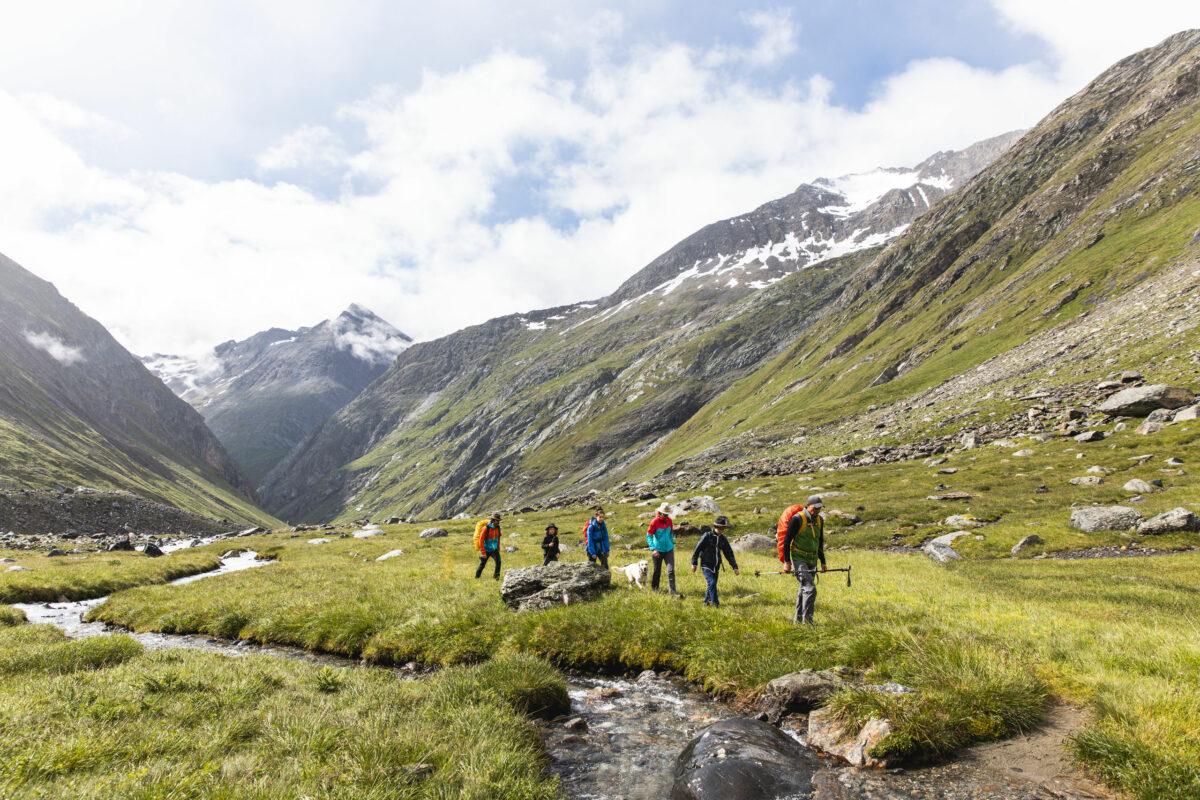


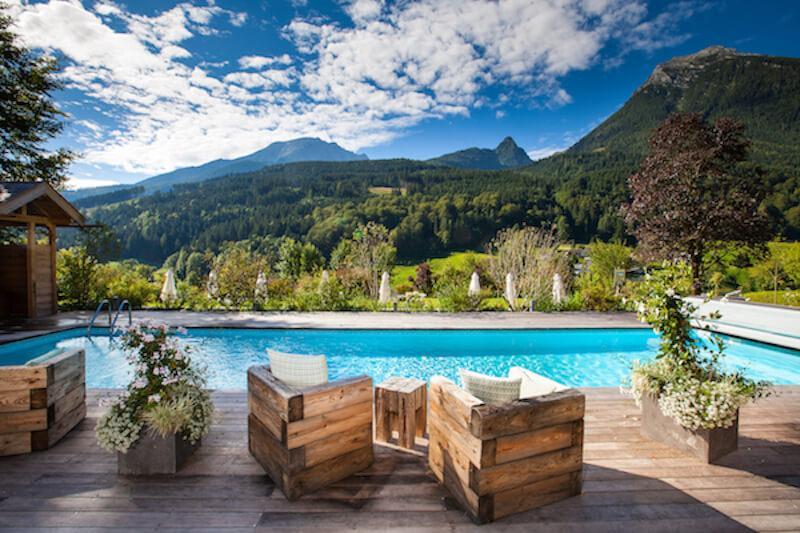

Nice blog. It will surely help beginners update their knowledge. The efforts you have put in to create the posts are quite interesting. Looking forward to seeing you soon in a new post.
We have a hiking packing list of essential items written down below that you will need to keep them with you for going on a hike. You never know which one is going to come handy for emergency purposes.
What to Bring on a Short Hike? – Beginners Guide
Thank you for the nice words and for adding a link to your packing guide for a short hike! 🙂